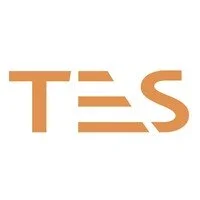LKT Lookout
Initial / Recert
Course Summary
This module forms part of the Lookout competence and is designed to train persons who are responsible for undertaking Lookout/Site Warden training as part of their duties on Network Rail Infrastructure.
It is designed to develop a person’s knowledge, understanding and skills and is therefore particularly suited to persons required to prove their competence in these areas.
Course Aim
The aim of this course is to provide delegates with the skills and underpinning knowledge required to undertake their duties in line with the associated capability of a Lookout.
Pre-requisites & Requirements
Delegates must:
Must be a minimum age of 18.
Must meet the medical requirements of Network Rail Standard NR/L2/OHS/00124 Medical Fitness Level 3.
Must hold a valid Sentinel Track Safety Card endorsed with PTS and must be out of learning support.
Have the medical level authorisation to work alone.
Additional Information
Following successful completion of the Lookout (U) training, candidates will enter into a Probationay status and be required to complete the Post Training Development Workbook in order to convert their competence from ‘probationary (P)’ to ‘competent’. This workbook must be completed within a 12 month period and is the responsibility of the sponsor. Sponsors will be required to record the completion of the Workbook via Sentinel.
All PPE must meet the requirements of NR/L2/OHS/21 and RIS-3279-TOM and as a minimum be equipped with:-
High visibility upper body clothing with reflective tape, with Sentinel Sponsor Logo
High visibility lower body clothing with reflective tape
A safety helmet with Sentinel Sponsor Logo
Safety footwear to support ankle and protective toe cap
Suitable safety eyewear
Suitable safety gloves
What Does a Lookout Do?
The Lookout is a fundamental safety role on the railway, essential for protecting trackside workers from approaching trains. They act as the "eyes and ears" for a work group, constantly scanning the lines for train movements and providing timely warnings to allow the team to move to a Position of Safety. While simple in concept, the role demands extreme vigilance and unwavering concentration.
What is a Lookout?
A Lookout is a trained and competent individual whose sole responsibility is to provide warning of approaching trains to a work group. They work as part of a Safe System of Work, typically under the direction of a COSS (Controller of Site Safety), and are positioned strategically to have an unobstructed view of the railway line in both directions. Their timely warning signals (e.g., horn, whistle, flag) are crucial for ensuring the safety of personnel working on or near the tracks.
Key Duties and Responsibilities of a Lookout:
The Lookout's role is entirely focused on vigilance, communication, and immediate action when a train is detected. Their duties include:
Maintaining Constant Vigilance: Continuously scanning the railway lines in their designated area for approaching trains. This is their absolute primary focus.
Early Detection: Being positioned and equipped to detect approaching trains as early as possible to provide maximum warning time.
Giving Clear Warnings: Using pre-arranged audible and/or visual warning signals (e.g., horn, whistle, flag, shout) to alert the work group that a train is approaching.
Confirming Acknowledgement: Ensuring that the work group has heard and acknowledged the warning and is moving to a Position of Safety.
Monitoring Work Group: Ensuring all members of the work group have reached a safe place before the train arrives.
Knowing Positions of Safety: Being fully aware of all designated Positions of Safety within their area and guiding the work group to them.
Communicating with COSS: Reporting the status of train movements and the work group to the COSS.
No Other Duties: A Lookout must never be assigned any other duties that could distract them from their primary function of looking out for trains.
Where a Lookout can work within TES:
The Lookout competency is widely applicable across TES's operational departments, as it is a core component of most work activities on or near the railway where a COSS is managing train protection. Lookouts are integral to:
Permanent Way (P-Way): Providing protection for teams undertaking track maintenance, renewals, and repairs.
Electrification (OLE / 3rd Rail): Ensuring safety for teams working near electrified lines.
Technical Services: Supporting technicians working on signals, telecoms, or other lineside equipment.
Possession Management: Contributing to the overall safety arrangements within large or complex possessions by providing local warnings.
Any Operational Site: Essential for almost any task carried out on the operational railway that requires protection from train movements.
Let’s Learn Together
Interested in our NSAR Gold Standard team training your staff?
Fill out some info and we will be in touch shortly!
We can't wait to hear from you!
Explore more of TES
Want to explore more of what TES have to offer? Use the search function below

